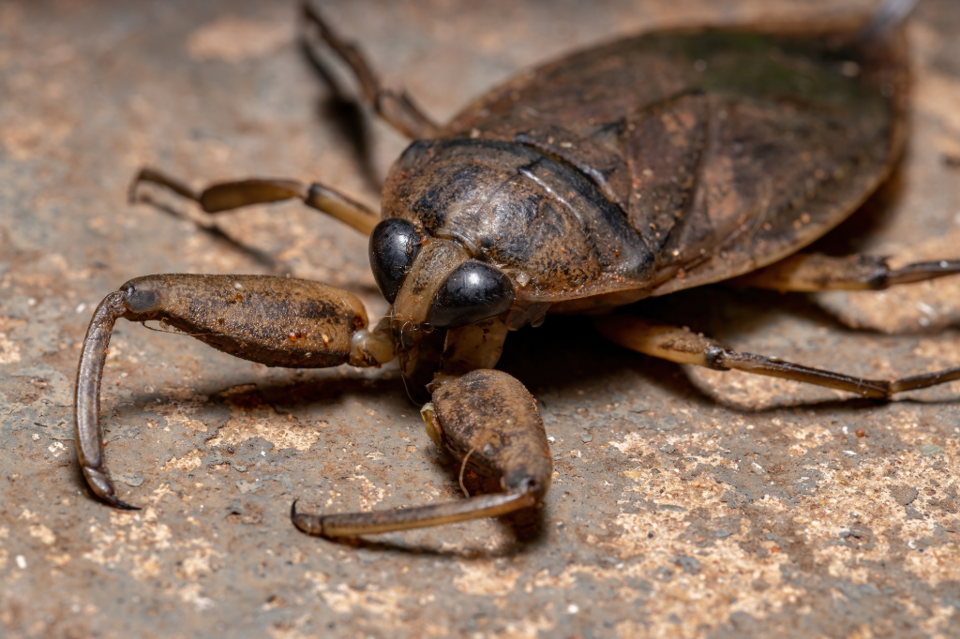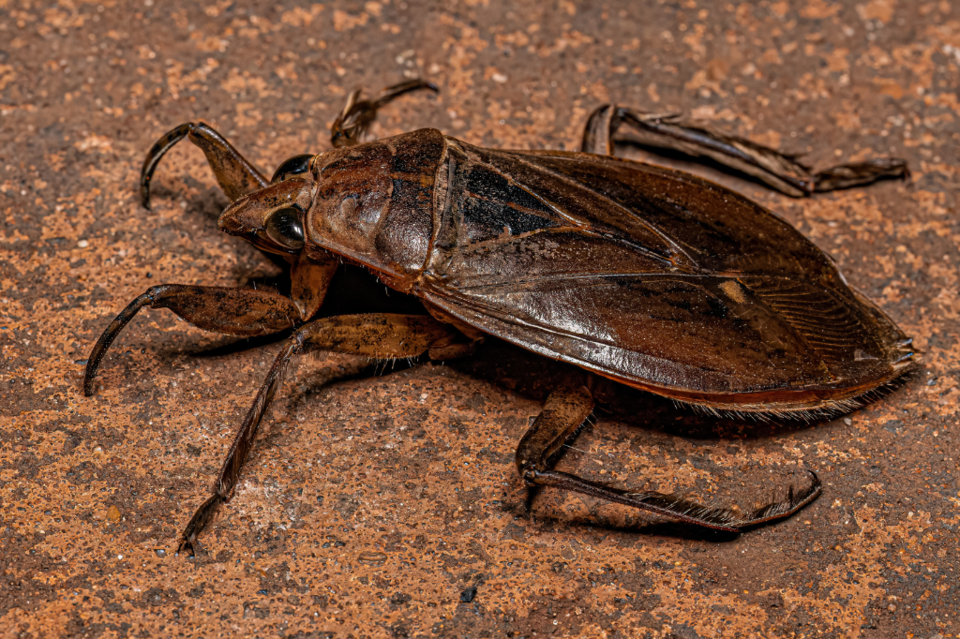Found all around Ontario, the giant water bug, also known as 'toe-biters' or 'alligator ticks', is an insect that has been making waves—literally.
Known for its impressive size, this aquatic insect can grow up to 6 cm long, making it one of Canada’s biggest insects when you exclude wings.
What is a Giant Water Bug?
The giant water bug, or Lethocerus americanus, belongs to the Belostomatidae family. These critters are native to southern Canada and the U.S. and are well-adapted to an aquatic lifestyle. They are flat and oval-shaped, with a dark brown colour that helps them blend in with their muddy surroundings. These bugs have a set of strong pincers, but it’s their mouth that packs the real punch.
A Predatory Lifestyle
Giant water bugs are formidable predators in the water. They use their front legs to grab prey—much like a praying mantis—and their flat hind legs to swim. Their diet includes other insects, small fish, tadpoles, and even small snakes. Once they catch their prey, they inject a digestive solution that liquefies the insides, allowing them to suck up the nutritious soup.
The 'Toe-Biter' Nickname
The nickname ‘toe-biter’ comes from their tendency to pinch the toes of unsuspecting swimmers or those wading in shallow waters. While their bite can be quite painful, it’s generally not harmful to humans. These bugs are more interested in their typical aquatic prey than in people.

Reproduction and Behaviour
Female giant water bugs lay their eggs on the backs of male bugs. The males then take care of these eggs until they hatch, showcasing a unique approach to parenting in the insect world. They also have an interesting method of breathing: small breathing tubes called spiracles allow them to draw in air while staying underwater.
Where to Find Them
Giant water bugs prefer the bottoms of muddy waters and ponds or nearby vegetation. They are skilled at blending in with their surroundings, making them hard to spot unless they’re rinsed off. These insects can tolerate slightly polluted water, unlike many other aquatic insects, which is why they might be more visible in urban areas.
At night, they are often drawn to light sources and can be found near backyard pools or other well-lit areas. Sightings of these bugs have been frequently reported across Ontario, with residents documenting their encounters on platforms like iNaturalist.ca.
While the giant water bug might look a bit intimidating, it plays an important role in our ecosystem. From controlling populations of other aquatic insects to being a part of the diet for other wildlife, these bugs are an essential part of the natural world.
So, the next time you spot one of these creepy yet fascinating creatures, take a moment to appreciate their unique role in nature.




